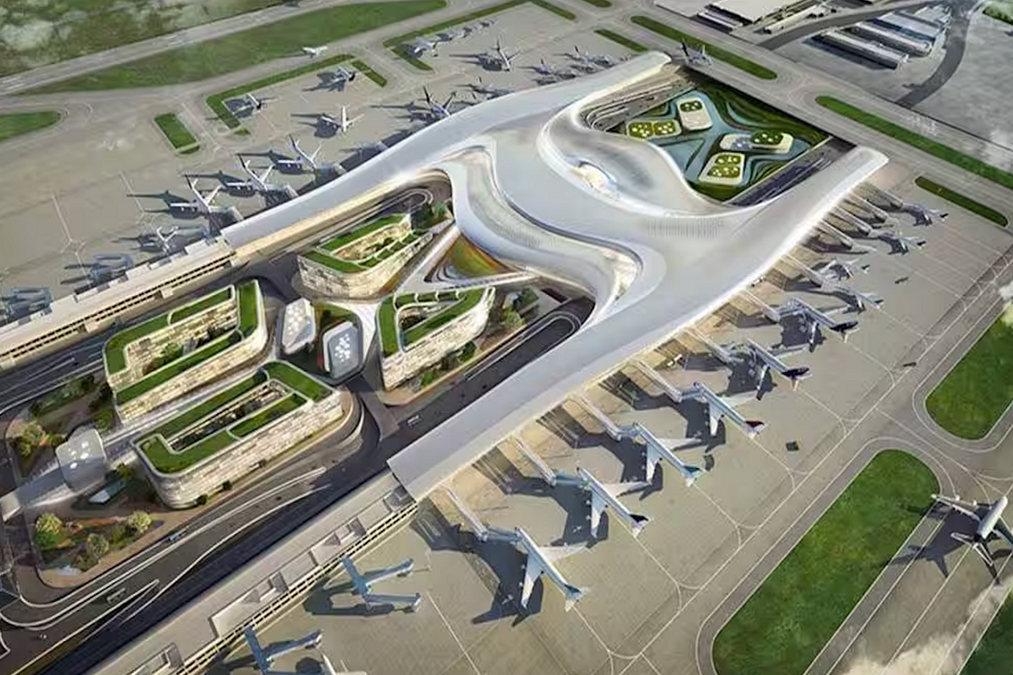Navi Mumbai Airport Expands to Meet Rising Aviation Demand with New Runway
Navi Mumbai Airport Gears Up for Major Expansion to Handle Growing Aviation Demand. The ongoing development of the Navi Mumbai International Airport (NMIA) is set to significantly transform the region’s aviation infrastructure. In a bid to cater to the rising demand for air travel and aviation services, the airport authorities have begun dismantling structures to make way for a second runway and further enhance the airport’s capacity. This move is a pivotal step towards establishing NMIA as a state-of-the-art hub for both commercial and general aviation.
NMIA, which is expected to commence domestic flight operations by mid-2025, is undergoing rapid infrastructural upgrades. Among the key developments is the expansion of the runway system, including the construction of a second runway. The first runway, once operational, will be supplemented by the second, allowing the airport to accommodate a greater volume of air traffic and provide an efficient solution to congestion at Mumbai’s city airport. A significant challenge for Mumbai’s city airport, as it continues to handle increasing air traffic, is the limited parking capacity for general aviation aircraft. Currently, small aircraft, including business jets, turboprops, and charter planes, are often parked at distant general aviation bays, far from the main runway. This arrangement not only complicates operations but also fails to meet international standards for general aviation parking.
To address these issues, most of the general aviation aircraft currently stationed at Mumbai airport will be relocated to the new facilities at NMIA. These facilities, including hangars and parking bays, are designed to cater specifically to private and chartered aircraft, providing much-needed space and ensuring more efficient use of the airport’s infrastructure. The move is expected to ease congestion at the city airport, which struggles with the tight space and growing demand. Capt. Rajesh Bali, Managing Director of the Business Aircraft Operators Association (BAOA), acknowledged the decision to shift general aviation aircraft to NMIA, highlighting that the new airport would be more suited to modern aviation standards. He pointed out that the distance between Mumbai city airport’s runway and the parking bays for general aviation aircraft does not comply with established international guidelines. The design of NMIA, on the other hand, is set to offer optimised layouts, ensuring better efficiency and safety.
Currently, Mumbai airport accommodates just 24 general aviation aircraft, but this number is expected to grow. With limited space, aircraft often need to be towed into parking slots, which can slow down operations and create additional challenges for the airport staff. NMIA, however, will be equipped with dedicated spaces for a larger fleet, reducing the need for such operational workarounds and improving overall functionality. NMIA’s expansion project is also a response to the growing demand for private and charter aircraft services, as well as the increasing pressure on Mumbai’s city airport. By offering modern and advanced facilities, including more hangars and parking bays, NMIA will not only address these challenges but also enhance the aviation infrastructure for the region. It will provide much-needed relief for the aviation community and enable smoother operations for general aviation operators, many of whom have long awaited the availability of better infrastructure.
As the airport nears its official opening, its robust infrastructure will be key to accommodating the growth of aviation in Mumbai and beyond. By the end of 2025, NMIA is poised to become a key player in India’s aviation landscape, enhancing connectivity and meeting the growing demands of both commercial and private aviation sectors. With the gradual shift of general aviation operations to the new airport, the region’s aviation infrastructure is set to evolve, marking a new era of seamless and efficient air travel.







